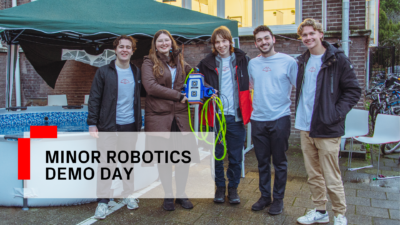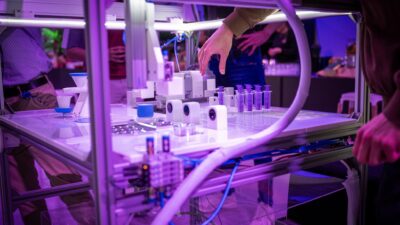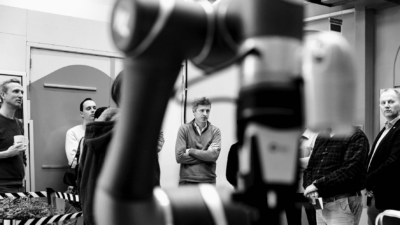Drone racing by human pilots is becoming a major e-sport. In its wake, autonomous drone racing has become a major challenge for artificial intelligence and control. Over the years, the speed of autonomous race drones has been gradually improving, with some of the fastest drones in recent competitions now moving at 2 m/s.
Most of the autonomous racing drones are equipped with high-performance processors, with multiple, high-quality cameras and sometimes even with laser scanners. This allows these drones to use state-of-the-art solutions to visual perception, like building maps of the environment or tracking accurately how the drone is moving over time. However, it also makes the drones relatively heavy and expensive.

At the Micro Air Vehicle Laboratory (MAVLab) of TU Delft, the aim is to make light-weight and cheap autonomous racing drones. Such drones could be used by many drone racing enthusiasts to train with or fly against. If the drone becomes small enough, it could even be used for racing at home. The main challenge in creating this drone lies in the use of only a single, small camera and in the highly restricted amount of processing.
A 72-gram autonomous racing drone
The drone racing team of the MAVLab has presented the currently smallest autonomous racing drone in the world. The drone is 10 cm in diameter and weighs 72 grams. It uses only a single camera and very little onboard processing in order to autonomously fly through a racing track with a speed that rivals that of the fastest, bigger autonomous racing drones.
Algorithms
The main innovation underlying this feat is the creation of extremely efficient and yet still robust algorithms. “The wireless images in human drone racing can be very noisy and sometimes not even arrive at all”, says Christophe De Wagter, founder of the MAVLab. “So, pilots rely heavily on their predictions of how the drone is going to move when they move the sticks on their remote control.”
Racing performance
The drone used the newly developed algorithms to race along a 4-gate race track in TU Delft’s Cyberzoo. It can fly multiple laps at an average speed of 2 m/s, which is competitive with larger, state-of-the-art autonomous racing drones. Thanks to the central role of gate detections in the drone’s algorithms, the drone can cope with displacements of the gates.

Beyond racing
Although racing is a quickly growing e-sport with more and more enthusiasts involved, autonomous racing drones are useful beyond drone racing alone. “For typical drones with four rotors, flying faster also simply means that they are able to cover more area. For some applications, such as search and rescue or package delivery, being quicker will be hugely beneficial”, adds Guido de Croon, scientific leader of the MAVLab. “Our focus on light weight and cheap solutions means that such fast flight capabilities will be available to a large variety of drones.”



